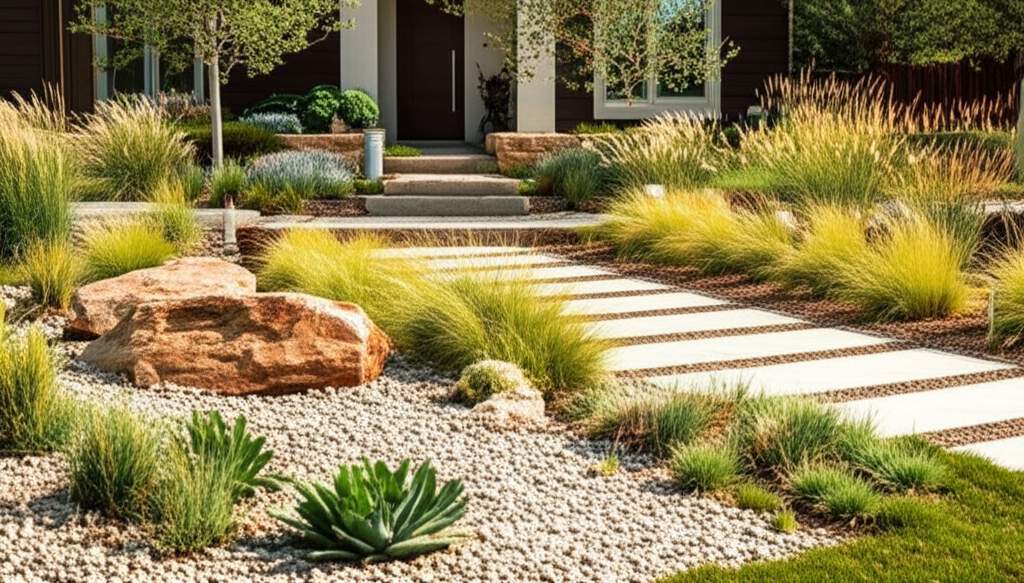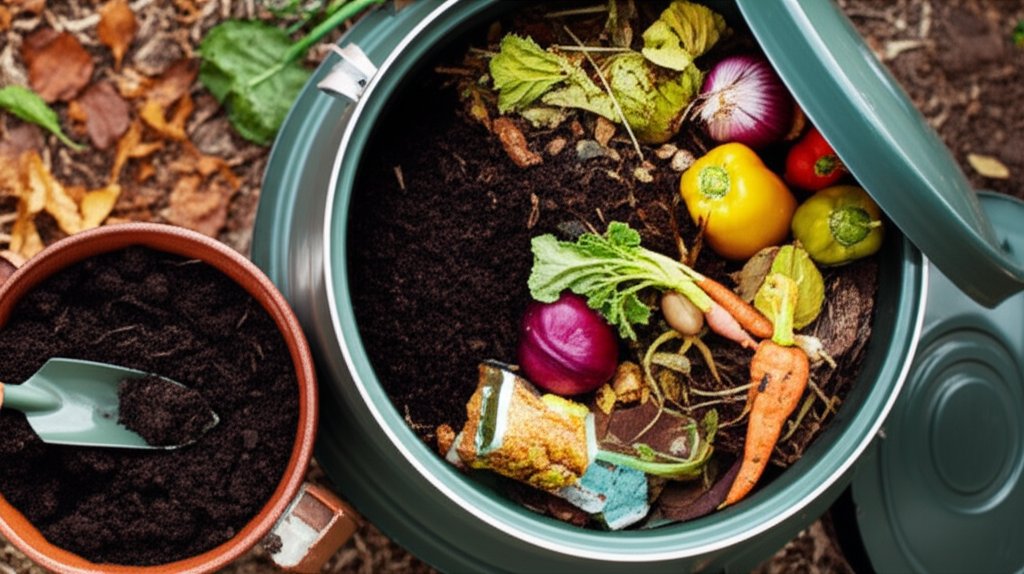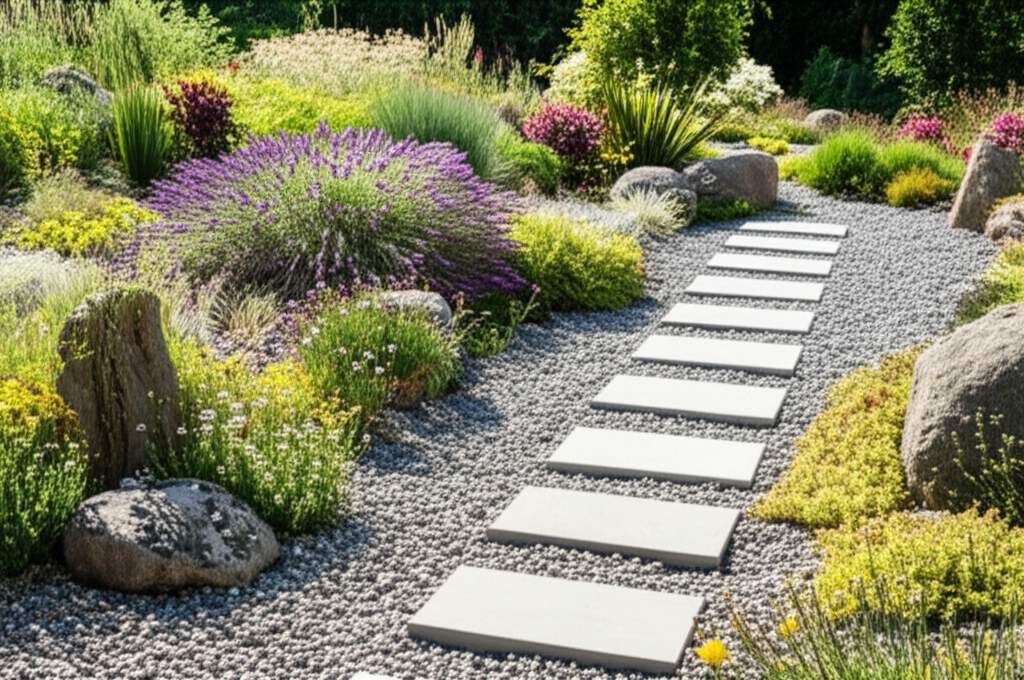Why Traditional Lawns Fail in Summer Heat
Traditional lawns often struggle during intense summer heat, turning from lush green to patchy brown despite constant watering. Homeowners pour time and resources into maintenance, only to watch their efforts fade away. This common frustration highlights a larger issue: conventional turf grass is not always suited to hot, dry conditions. Instead, xeriscaping provides practical alternatives that conserve water while maintaining an attractive yard. As experts at Dickinson's Garden Center, we have helped countless clients transform their outdoor spaces into resilient landscapes that thrive naturally.
The Limitations of Conventional Lawns
Turf grass species like Kentucky bluegrass demand frequent irrigation because their shallow roots cannot access deeper soil moisture. In regions with limited rainfall, this leads to high water bills and environmental strain. Moreover, regular mowing, fertilizing, and pest management add to the workload, often resulting in a yard that looks stressed rather than inviting. We see this pattern repeatedly: lawns that require constant intervention yet still succumb to heat stress, drought, and soil compaction.
Xeriscaping addresses these challenges by focusing on plants and designs that work with local climate conditions. This approach reduces water use by up to 75 percent, according to our experience with client projects, and minimizes maintenance needs. Homeowners gain more time to enjoy their yards rather than tend to them endlessly.
Effective Alternatives for Drought-Resistant Yards
Transitioning from a traditional lawn does not mean sacrificing aesthetics or functionality. Several proven options allow you to create a vibrant, low-water landscape. Consider these strategies, which we recommend based on successful installations at Dickinson's Garden Center.
- Native Grasses: Opt for varieties like buffalo grass or blue grama, which establish deep roots and require watering only once every two weeks during peak summer. These grasses grow to about 6 inches tall, reducing mowing frequency to monthly sessions, and they maintain a natural green hue without supplemental fertilizers.
- Groundcovers: Plants such as creeping thyme or sedum spread quickly to form dense mats that suppress weeds and retain soil moisture. For example, install them in sunny areas where they bloom with purple flowers in summer, adding color and fragrance while needing minimal care.
- Perennial Beds: Design beds with drought-tolerant perennials like lavender, yarrow, and coneflowers. Space plants 12 to 18 inches apart in well-drained soil, and they will return year after year, providing blooms from spring through fall with just occasional deadheading.
- Gravel Landscapes: Use pea gravel or decomposed granite as a base, interspersed with succulents and ornamental grasses. This setup drains efficiently, prevents erosion, and creates a modern look that complements contemporary homes. Add pathways for easy access, ensuring the space remains usable for gatherings.
- Mulched Areas with Shrubs: Apply a 3-inch layer of organic mulch around drought-resistant shrubs like sage or manzanita. This retains moisture, cools the soil, and reduces weed growth, allowing shrubs to flourish with watering every three to four weeks.
Combine these elements to suit your yard's size and sun exposure. For instance, reserve a small patch of native grass for play areas while converting the rest to mixed beds and gravel zones.
Matching Style to Your Home and Lifestyle
Drought-proof designs can align with various aesthetics, from rustic to minimalist. A meadow-style yard with waving native grasses evokes a natural prairie feel, ideal for informal settings. In contrast, a gravel courtyard with structured succulent arrangements offers clean lines for modern architecture. We advise clients to select elements that reflect their personal taste, such as incorporating colorful perennials for visual interest or stone features for texture.
Blending styles prevents a disjointed appearance. Repeat motifs, like using the same gravel type in paths and borders, to create unity. This cohesive approach ensures the yard feels intentional and welcoming, enhancing curb appeal and property value.
Implementing Changes Step by Step
Begin with a manageable project to build momentum. Assess your yard's soil type and sunlight patterns, then replace a 10-by-10-foot section of lawn with groundcovers or perennials. Monitor progress over one season: note reduced water usage and improved plant health. Expand gradually, perhaps adding a mulched shrub border next, until the entire space is transformed.
Practical steps include testing soil pH to ensure it falls between 6.0 and 7.5 for optimal plant growth, and grouping plants with similar water needs to simplify irrigation. Over six to twelve months, you will see measurable benefits, such as a 50 percent drop in maintenance time and healthier, more resilient vegetation.
Long-Term Benefits of Xeriscaping
Xeriscaped yards not only endure summer heat but also support local ecosystems by attracting pollinators and reducing chemical runoff. Homeowners report greater satisfaction with spaces that require less intervention yet provide year-round beauty. At Dickinson's Garden Center, we have witnessed transformations where once-struggling lawns become thriving retreats, saving clients hundreds on water bills annually.
To succeed, focus on local adaptations: select plants native to your area for best results, use mulch strategically to conserve moisture, and design zones for different uses, like relaxation or entertainment. These choices create a landscape that is both practical and enduring.
In summary, traditional lawns often fail in summer heat due to their high demands, but xeriscaping offers sustainable solutions. By adopting these alternatives, you create a yard that is beautiful, efficient, and aligned with nature. Start small, experiment thoughtfully, and enjoy a space that thrives season after season.



